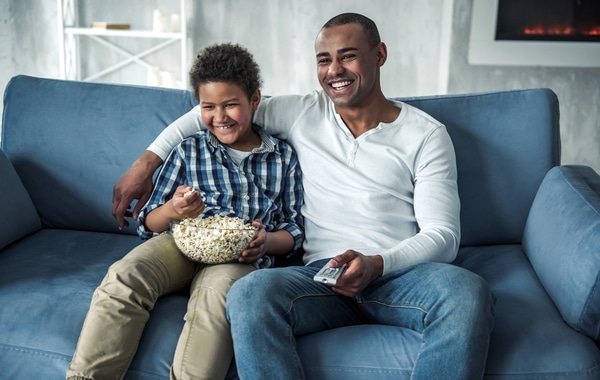
Talk About Content
It starts with conversations. Kids need to understand all the reasons behind why certain shows are off-limits. It can be the usual reasons, of course, such as excessive violence or nudity, but you should also point out that some shows are more complicated. To some degree, of course, this is subjective and depends on the family, but there are other elements as well. For example, “Big Mouth” would seem to be just another crude animated comedy, but it also delves into more complicated topics kids may not be able to handle.
Kids need to learn about adult issues eventually, of course, but even the biggest fan of Netflix would agree that a TV show isn’t an ideal place to start. Make sure your family understands and respects that perspective.
Netflix Parental Controls, Explained
Netflix divides its parental controls into two categories, “hard” and “soft,” but to be fully effective, you should implement both.
“Hard” controls work at the account level; any changes you make at this level will affect every profile on your account. They let you set a PIN number to access content above a certain maturity level, and also to set a PIN for specific shows. This means that if you want to watch some of the service’s more mature content, you’ll have to enter the PIN.
“Soft” controls work at the profile level and allow you to filter the content available for each profile. The maturity levels are “Little Kids,” “Kids,” “Teens,” and “All.” Keep in mind that what fits under each level is subjective, and that you may not agree with Netflix on what content is suitable. When you’re implementing these levels, set aside some time to stream a few of the shows available and ensure that there’s nothing you’ll need to talk to your family about. Keep in mind the reverse may also be true: Shows like the cooking show “Salt Fat Acid Heat” aren’t rated for little kids, for example, but probably won’t be objectionable.

Using Parental Control Apps With Netflix
Note, however, that Netflix only controls content. There are no timers, no methods of preventing Netflix from launching or being downloaded to certain devices, and other useful tools for parents. This is left to parental control apps.
Again, this should be a conversation. Children should understand why these controls are in place. For example, blocking Netflix during homework time or bed time should be a given. In some cases, you may want to set certain times for family viewing. But have a road map for when it’s OK to watch Netflix, or to use screens in general, that you can draw from.
Netflix can be a lot of fun and even highly educational. But parents can always use help managing it. To learn how Screen Time can help, try it for free.

Join the conversation